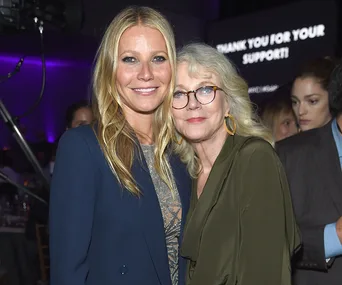About 10 years ago, Christine, now 80, broke her finger. The injury was painful but routine. She took herself to a general practitioner (GP) who put her finger in a splint and sent her on her way to heal at home.
The only problem? Over the following days and weeks, Christine’s finger didn’t improve at the rate it should have. Something wasn’t right – and she could feel it.
One month later, Christine started making her bed – a routine activity that she does every morning – when her finger got caught in the sheet, jerking it sharply, causing her a great deal of pain. She took herself back to her GP where it was discovered that she broke her finger again.
This kind of strain should never result in broken bones. Christine’s doctor ordered a bone density scan where it was discovered that she had osteoporosis. This did not come as a complete shock to Christine, as years earlier her mother had also been diagnosed with osteoporosis. Her doctor reminded her that bone strength is inherited.
“If you pick it up early enough, it’s not a major disaster,” Christine soon learned. Despite receiving a life-altering diagnosis, she considers herself one of the lucky ones. “For some people, the way they pick it up is because they keep on breaking a bone, a major bone, like a leg or a hip or something,” Christine continued. “And normally by that time they can’t really stop it from taking over your life. If my osteoporosis had been further advanced, I wouldn’t be telling you such a simple story.”

Osteoporosis can be a bit of a taboo topic; it is often referred to as ‘the silent disease’ because there are usually no symptoms until a person breaks or fractures a bone. Christine is committed to opening up the conversation – especially with her own family members, given the condition is hereditary. Her mother also suffered from osteoporosis and now her daughter, 35, makes sure she has a calcium-rich diet. “Osteoporosis is not just a disease of old people, but actually you need to start taking care of your skeleton in your late thirties, early forties so that you prevent it happening.”
Now, Christine manages her condition with medication which slows bone loss, improves bone density and reduces the risk of fractures. She also takes calcium and vitamin D every single day.
Five years ago, Christine had another bone density scan and this time, the results were more positive – the osteoporosis had slowed right down.
THE FACTS
What is osteoporosis?
Osteoporosis is a chronic condition that weakens bones over time, making them more likely to break. Osteoporosis means bones have become porous (sieve-like). If left untreated osteoporosis causes bones to become brittle and fragile.
Are you at risk?
Osteoporosis is most common amongst women over the age of 50; however, men are at risk too. There are many factors that can increase your risk of osteoporosis including family history, low calcium and vitamin D levels, along with having other chronic conditions and lifestyle factors.
You can assess your risk factor here.
Brought to you by Amgen.
For further information talk to your doctor. Disease education message by Amgen Australia. Amgen Australia, Level 7, 123 Epping Road, North Ryde NSW 2113. ABN 31 051 057 428. Phone: 1800 646 998. www.amgen.com.au. AU-15105. Approved April 2021.
References: 1. Osteoporosis Australia. What you need to know about osteoporosis. Consumer guide. 2017; 2. Royal Australian College of General Practitioners. Osteoporosis prevention, diagnosis and management in postmenopausal women and men over 50 years of age. East Melbourne, Vic: RACGP, 2017.



